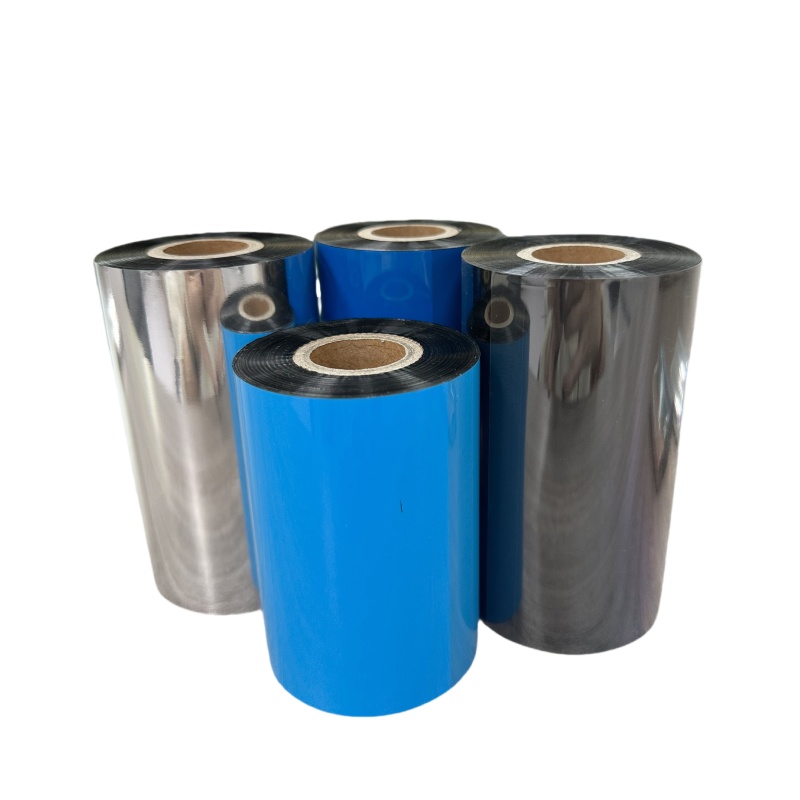Blog
What Are Barcoding Labels? A Complete Guide for B2B Logistics and Manufacturing
Barcoding labels are now indispensable tools for inventory tracking and shipping as well as asset management and regulatory compliance within today’s automated business operations. Scannable barcode labels prevent human mistakes while making operational processes more efficient.
Warehouse supervisors and manufacturing facility logistics coordinators need strong knowledge of barcoding label specifications and their applications when re-selling blank barcode label stock. B2B buyers along with distributors and procurement managers who require detailed knowledge on barcoding label types and sourcing methods will find this guide beneficial.
What Are Barcoding Labels?
Definition
Barcoding labels consist of adhesive-backed paper designed to showcase printed barcodes for automatic identification purposes. These labels hold 1D or 2D barcodes such as UPC or QR codes which are fundamental tools in supply chains for tracking products and managing inventory to enhance operational performance.
Barcode Types
- Linear barcodes encompass systems like Code 128, Code 39 and UPC-A.
- QR codes and Data Matrix represent 2D barcodes capable of storing larger data sets.
Key Label Features
- You can print these labels using direct thermal printing or thermal transfer methods and laser technology.
- Die-cut or continuous formats
- Paper or synthetic facestock
- Available in multiple sizes, shapes, and adhesives
Applications of Barcoding Labels in B2B Operations
Logistics and Warehousing
- Pallet labeling and bin identification
- Shipping and returns management
- Real-time inventory updates
Manufacturing
- Work-in-process labels
- Batch number tracking
- Part and component tagging
Retail and Distribution
- Shelf tags and price labels
- Stock-keeping unit (SKU) labels
- Inventory audits and cycle counts
Healthcare and Pharmaceuticals
- Lab specimen tracking
- Medication packaging and dosage labeling
- Chain-of-custody tracking for regulated products
Automotive and Aerospace
- Part certification labels
- Supplier-to-plant logistics
- Traceability compliance
Materials Used for Barcoding Labels
Facestock Options
- Thermal Paper: Economical, short-term use
- Top-Coated Paper: Improves scan quality, more durable
- Synthetic materials like BOPP and PET are designed to be tear-proof and water-resistant which makes them suitable for harsh environments.
Adhesive Types
- Permanent: Adheres to cartons, metals, poly bags
- Removable: Temporary labels that don’t leave residue
- Cold-Temp/Freezer Adhesive: For perishable and frozen goods
Liner Material
- Silicone-coated release liner
- The liner material comes in both standard and thin options to accommodate longer roll lengths
Printing Technology for Barcoding Labels
Direct Thermal
- No ribbon needed
- Ideal for short-term barcode applications (e.g., shipping)
- Best used in dry, controlled environments
Thermal Transfer
- The printing method employs a ribbon to apply ink directly onto the label.
- Offers long-term durability and excellent barcode clarity
- Used in harsh environments (outdoor, industrial)
Laser and Inkjet
- Often used in office settings
- Compatible with sheet-form labels (8.5” x 11”)
- Less efficient for high-volume labeling needs
Common Barcoding Label Sizes
| Label Size | Common Application |
|---|---|
| 4″ x 6″ | Shipping, inventory |
| 2″ x 1″ | Barcode tracking |
| 3″ x 2″ | Asset tags |
| 1.5″ x 0.5″ | Small item or component labeling |
| Custom sizes | Industry-specific uses |

Best Practices for Printing Barcoding Labels
Printer Setup Tips
- Select a print DPI setting of at least 300 for optimal performance of 2D barcodes.
- Generate scannable barcodes through label design software.
- Ensure printer calibration aligns with gap or black mark detection to maintain accurate printing.
- Always test barcode readability before full production
Barcode Readability Tips
- Use high-contrast black on white labels
- Select non-glossy materials for 1D codes to ensure proper laser scanner function.
- Include quiet zones around the barcode
- Keep barcode width-to-height ratio within ANSI standards
Avoiding Common Errors
- Misaligned prints → Recalibrate printer or adjust guides
- To prevent barcodes from fading you should either modify the heat setting or switch to top-coated material.
- If barcodes scan poorly use larger barcodes or upgrade to a printer with higher DPI.
Barcoding Labels vs Standard Labels
| Feature | Barcoding Labels | Standard Labels |
| Purpose | Machine-readable identification | General-purpose info or branding |
| Print Requirements | Higher DPI, precise alignment | Flexible |
| Materials | Optimized for scanner readability | Varies widely |
| Label Design | Barcode-centric | May include graphics or color |
Bulk Ordering Guide for Barcoding Labels
Minimum Order Quantities (MOQ)
- Custom: Starts at 10,000–50,000 labels
- Stock sizes: 1,000+ rolls available
Customization Options
- Die-cut shapes and sizes
- Pre-printed headers or static fields
- Sequential numbering or serialized codes
- Core labels and private label packaging
Roll Specs and Format
- Core size: 1” (desktop) or 3” (industrial)
- Outer diameter: Up to 8”
- Winding direction: Inside or outside wound
- Format: Roll or fanfold
Quality Control
- Barcode print verification across three quality grades: A, B, and C
- Adhesive bond strength testing
- Material and liner thickness tolerance
Label Storage and Handling
- Store at 20–25°C with 50% RH
- Keep out of direct sunlight and moisture
- Use within 12–18 months for optimal results
Environmental Considerations
- Paper labels are recyclable
- The recycling of certain liners and adhesives needs specialized processing methods.
- Consider water-based adhesives for sustainability
- Using pre-cut labels helps to minimize waste as opposed to trimming full sheets of labels down to size.
Conclusion
Modern B2B supply chains depend on barcoding labels because they deliver unmatched precision and efficiency when identifying and tracking items. These labels find applications across multiple industries such as warehousing and eCommerce and healthcare to automotive enabling enhanced visibility along with improved data-driven decision-making.
Distributors and logistics professionals must understand their materials and adhesive options, printer compatibility requirements, and quality benchmarks when selecting the appropriate barcoding labels. Precision determines success when creating serialized SKU tags or cold-chain-compliant tracking labels.
Frequently Asked Questions (FAQ)
Are barcoding labels waterproof?
Only synthetic and top-coated materials are water- and chemical-resistant.
Can I print barcoding labels on any thermal printer?
Most can, but you need to match the label size, core size, and DPI requirements.
What’s the best print resolution for barcode labels?
At least 300 DPI for 1D barcodes; 600 DPI for small 2D codes.
Can I get custom barcoding labels with my logo?
Yes. You can pre-print logos and combine them with variable barcode printing.
How do I verify my barcodes work?
Use a barcode scanner or grade-checking software to test readability.
Need High-Quality Barcoding Labels in Bulk?
Contact us today to request free samples or place a bulk inquiry.
📧 Email: sales@foyottr.com
📞 Tel: +86-592-6018318
🌐 Website: https://foyottr.com
